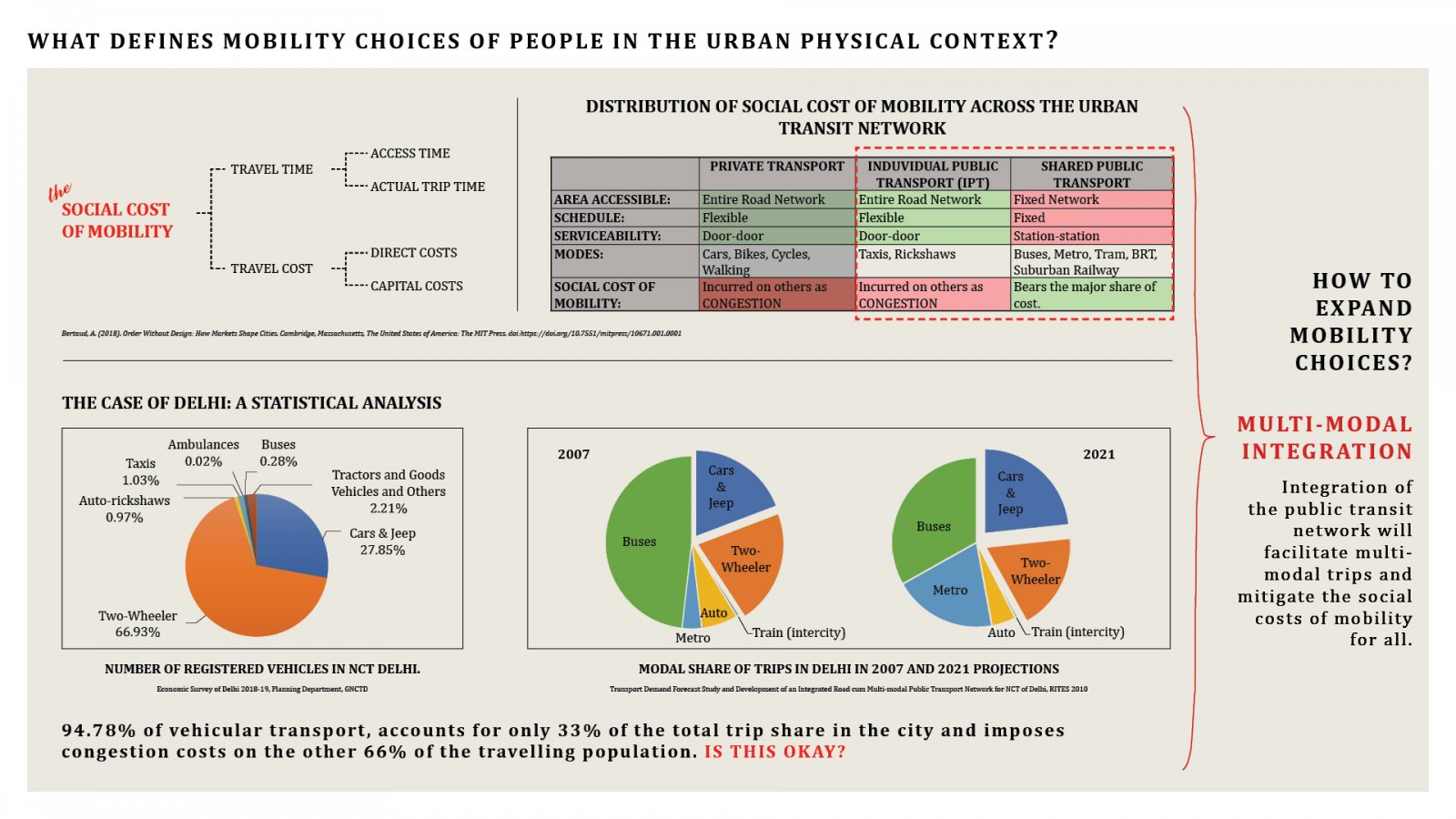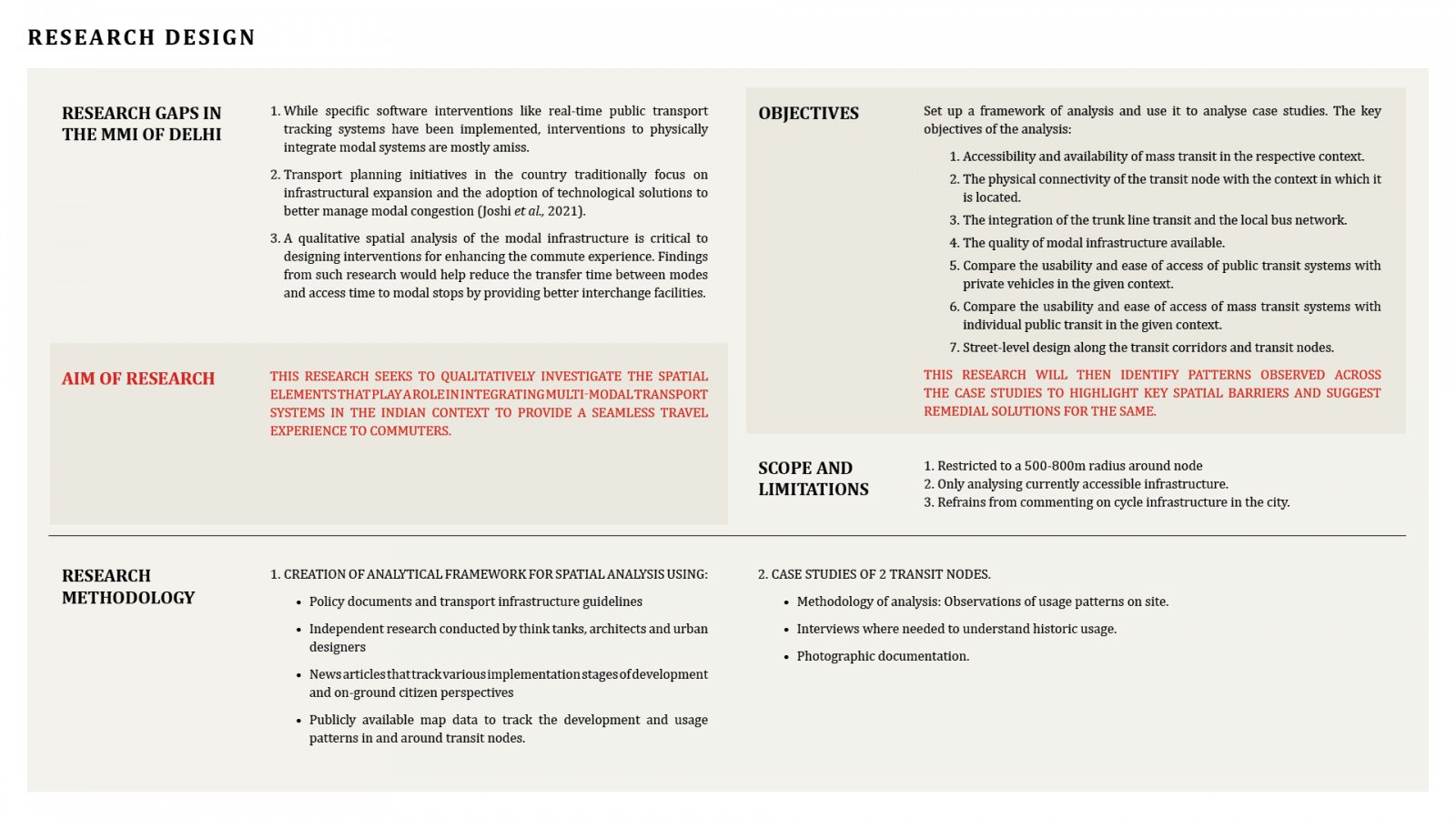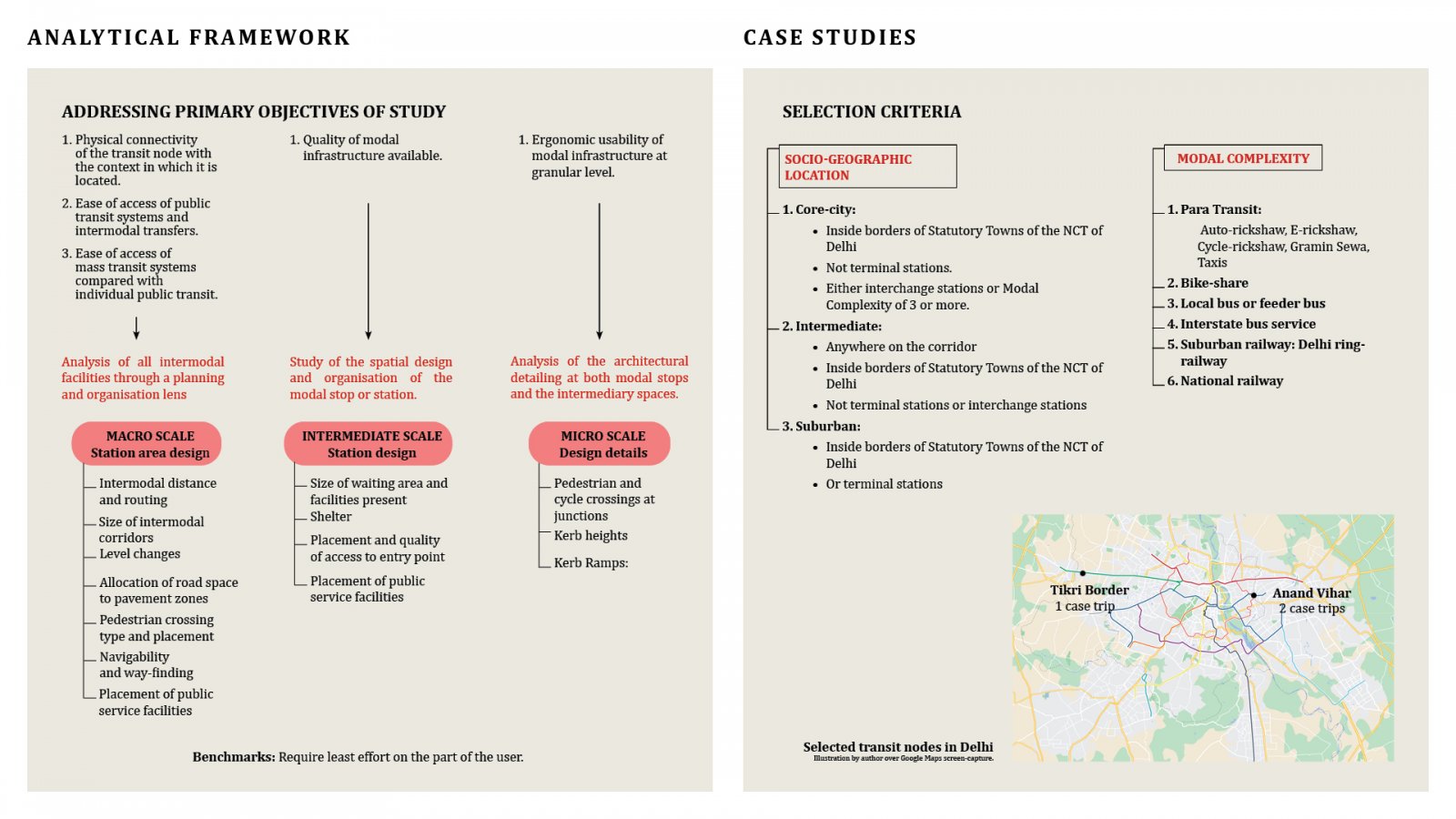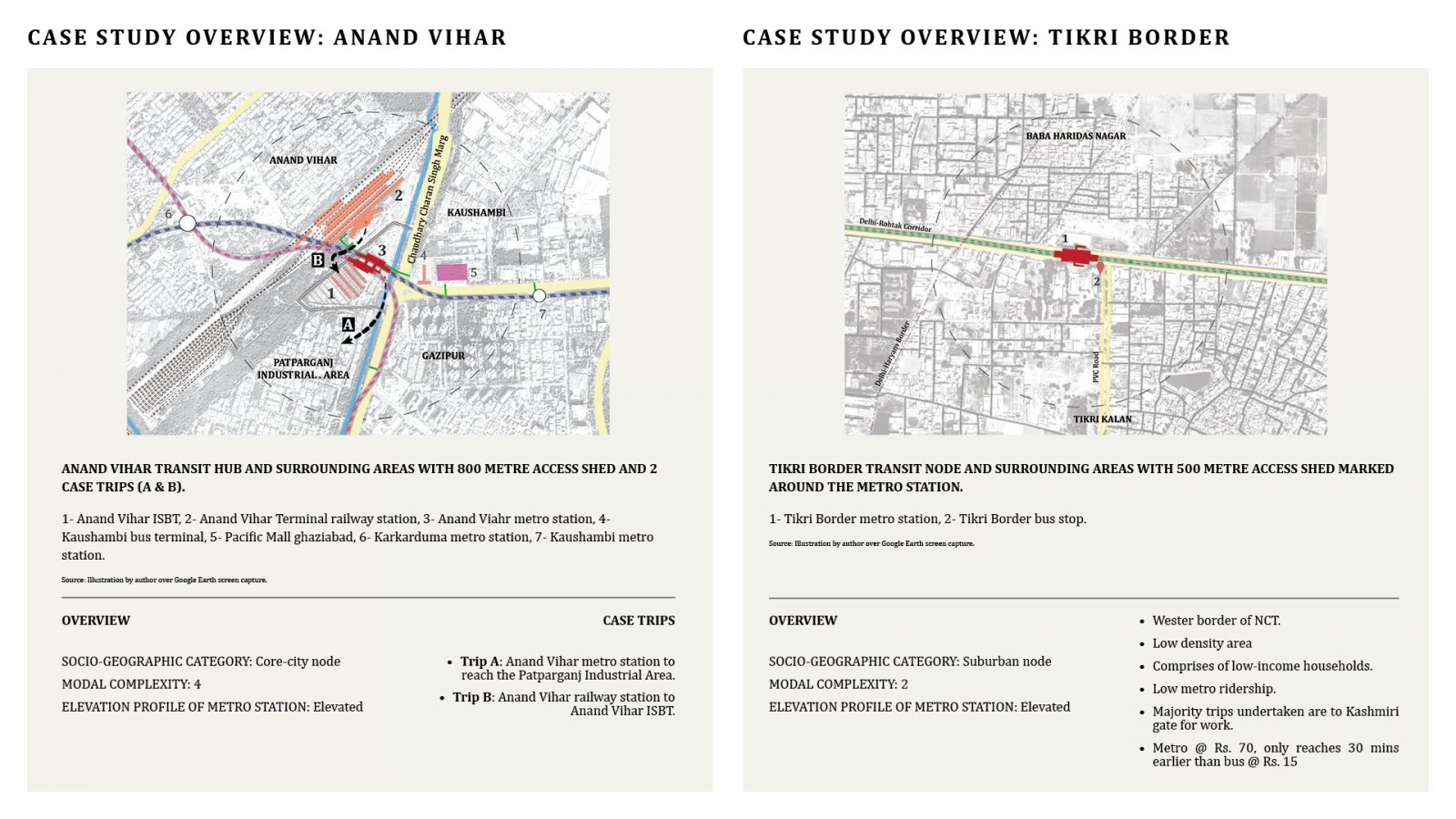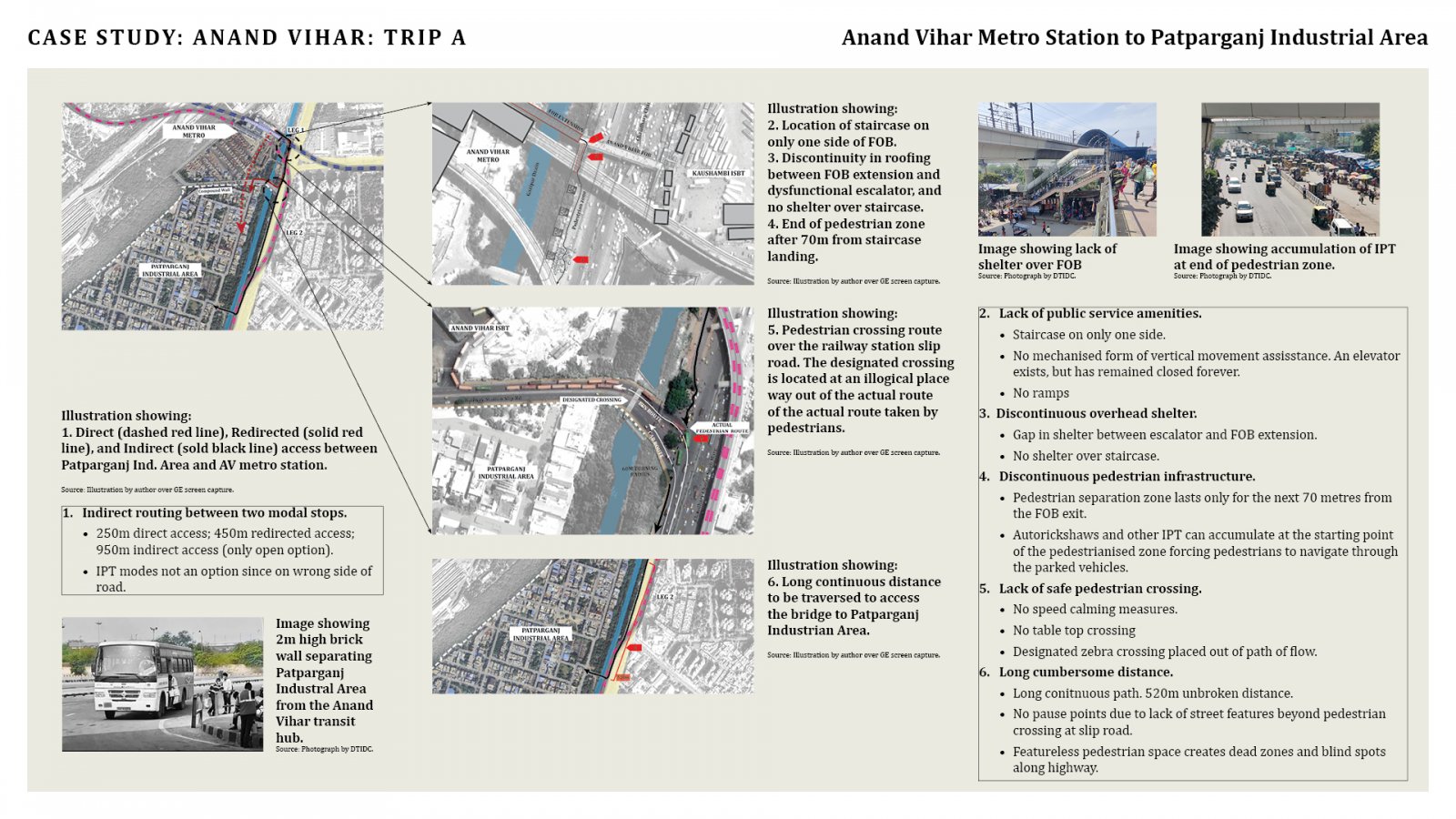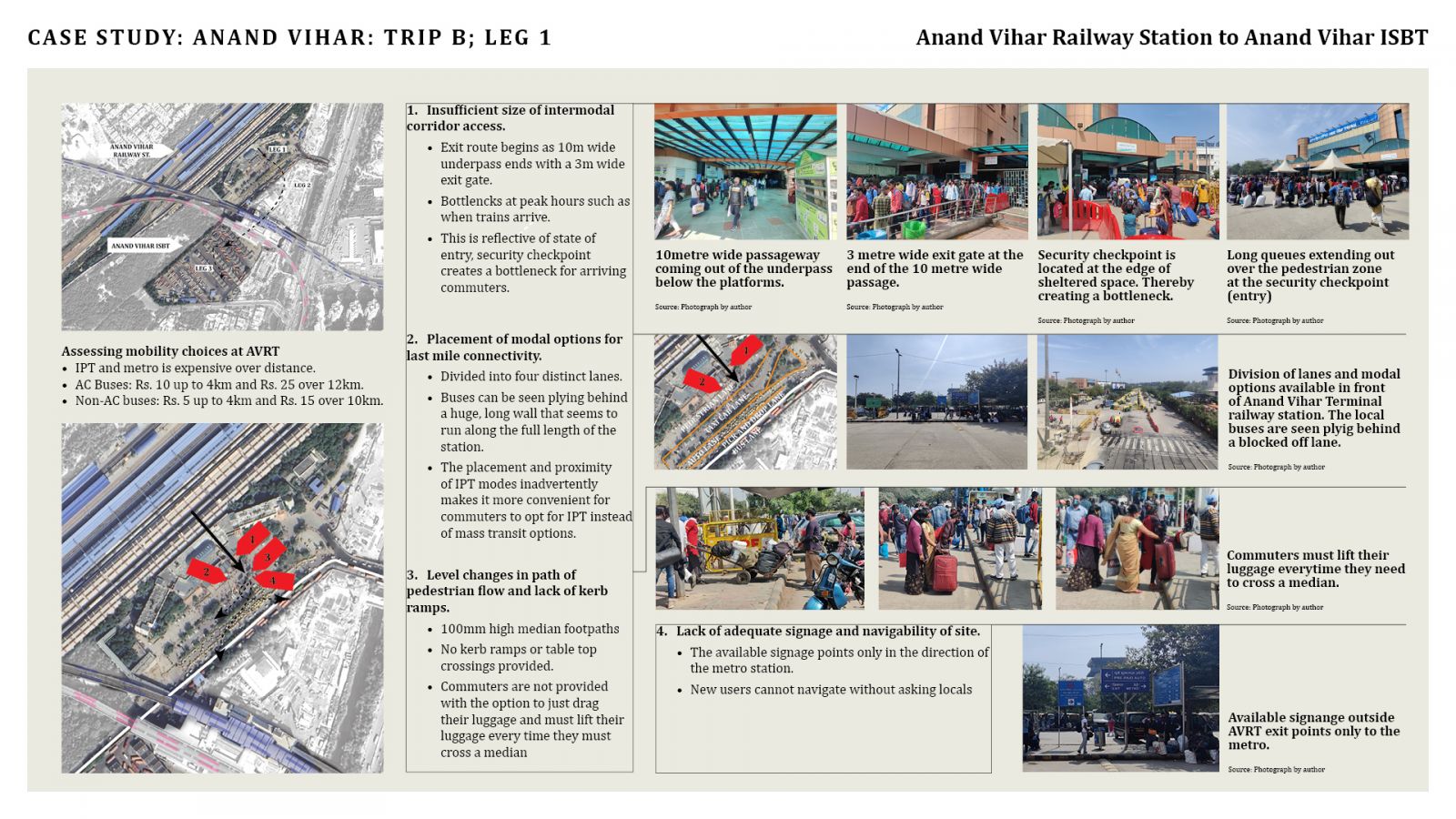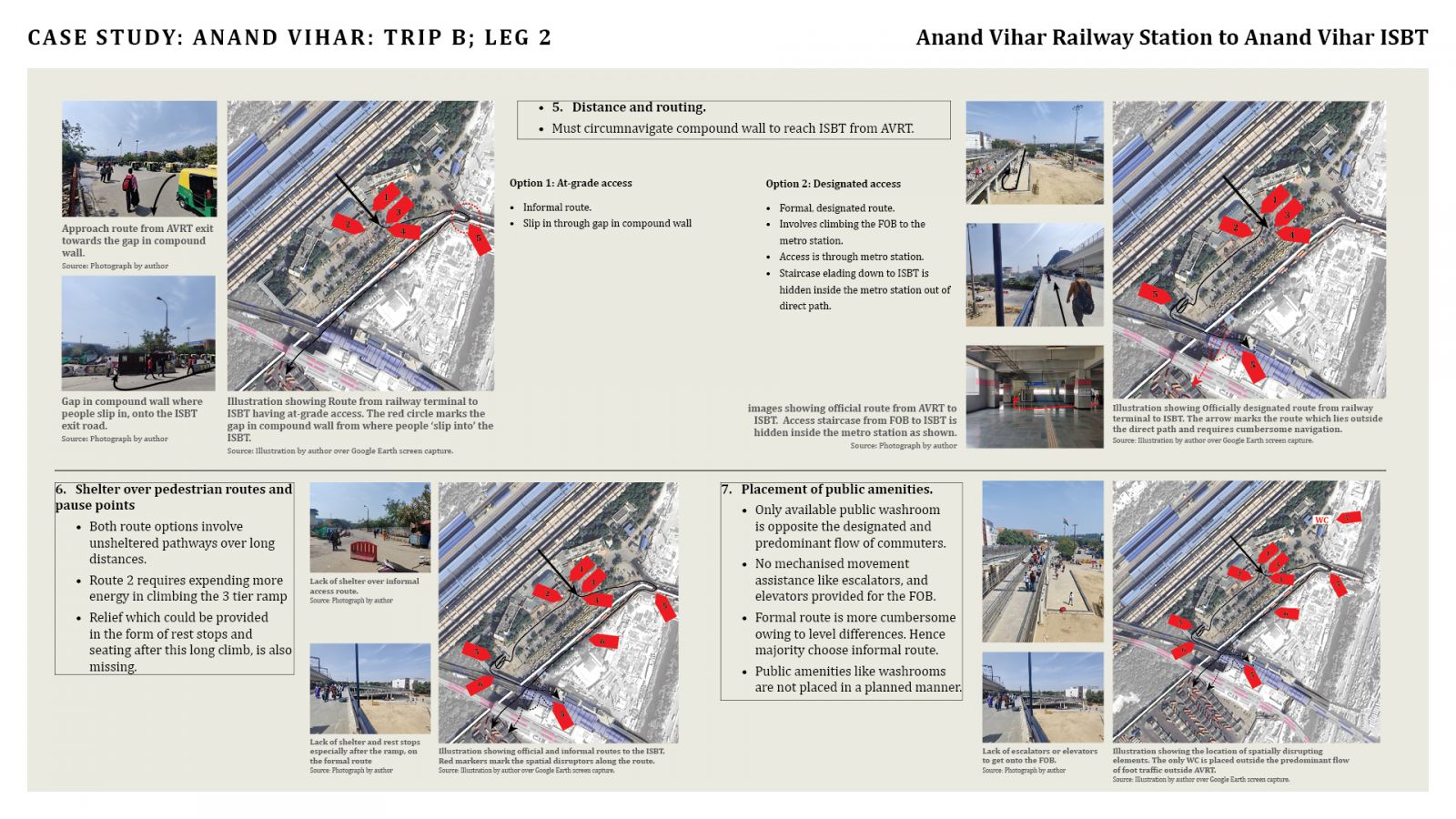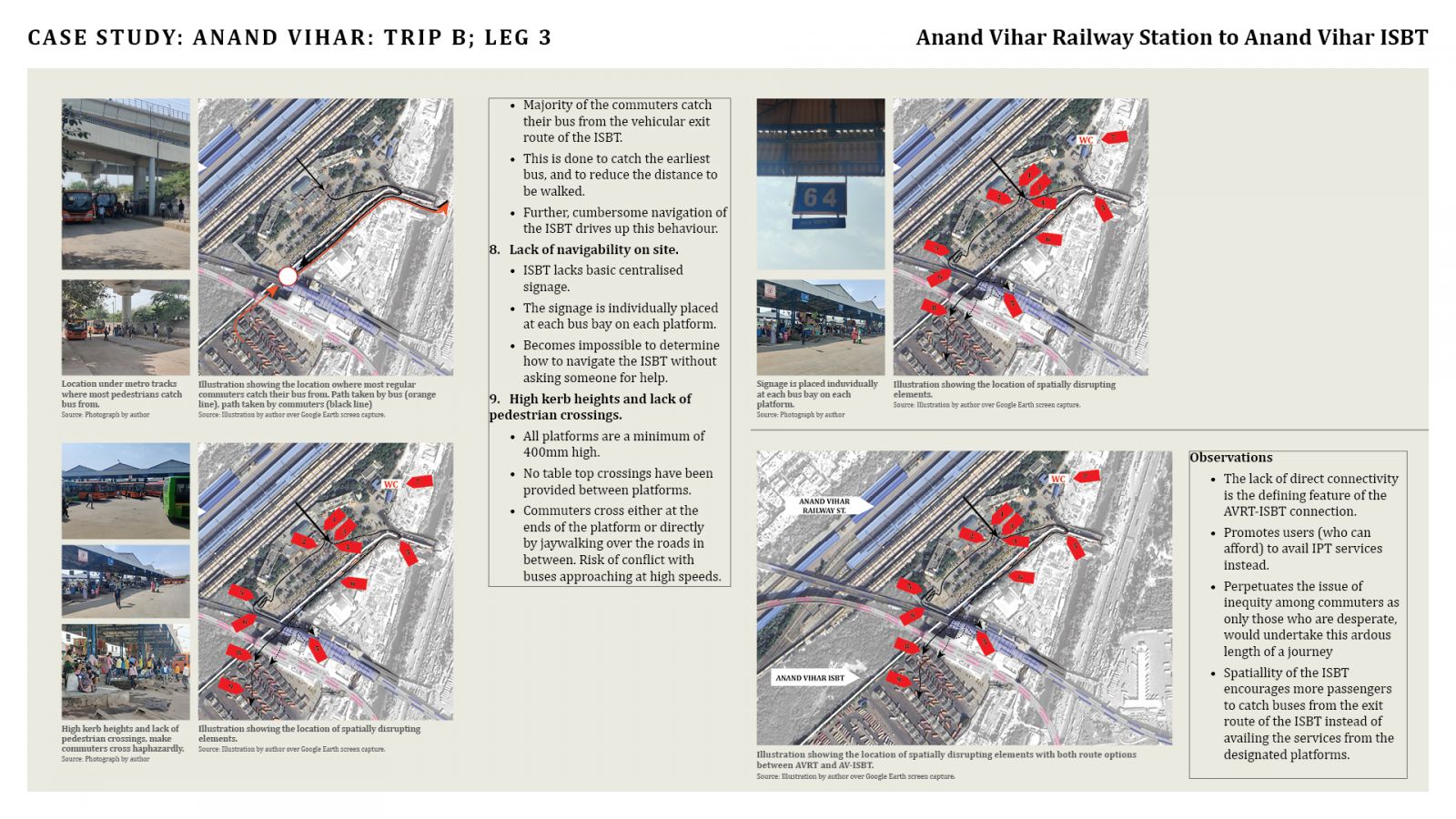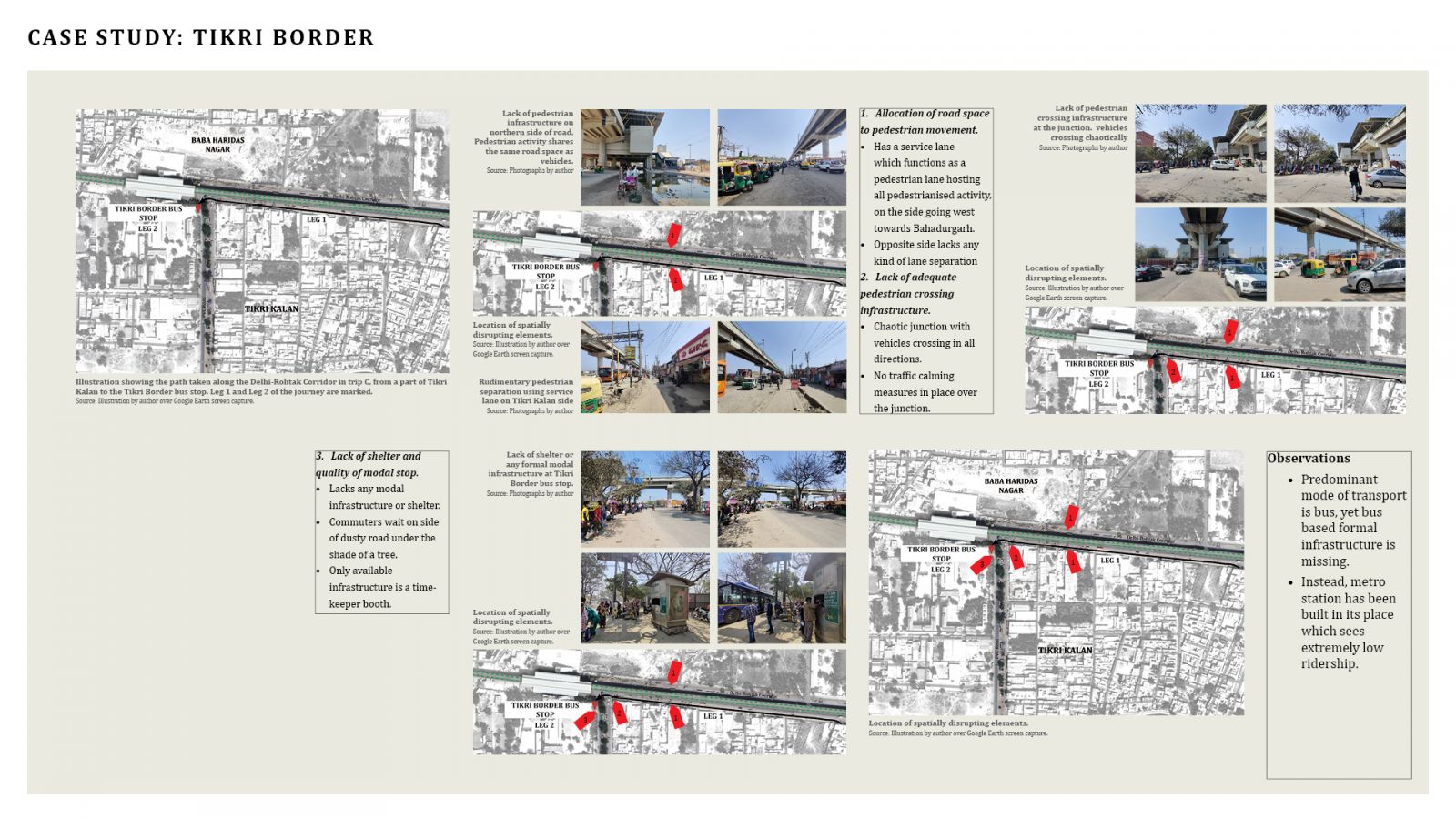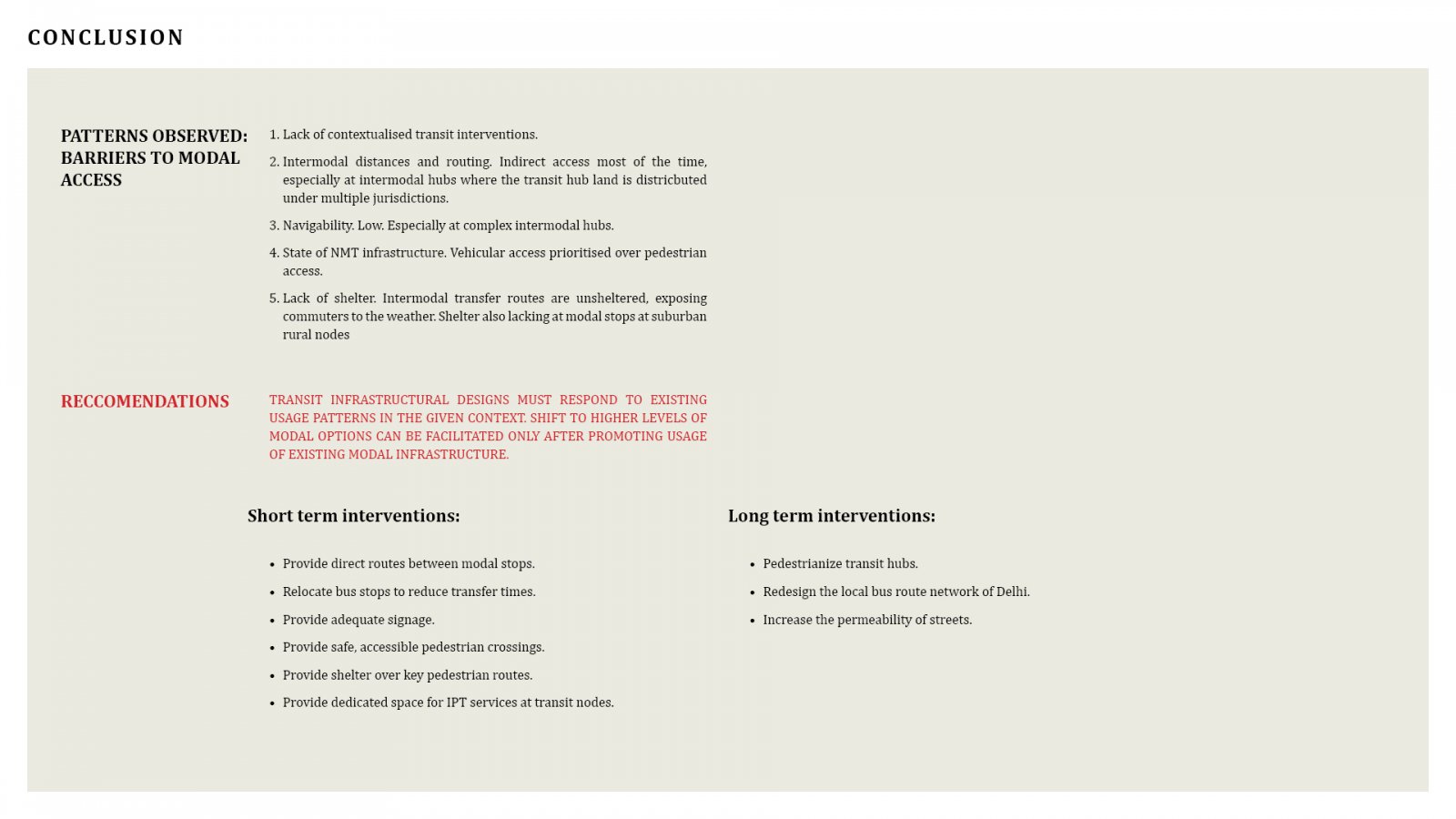Your browser is out-of-date!
For a richer surfing experience on our website, please update your browser. Update my browser now!
For a richer surfing experience on our website, please update your browser. Update my browser now!
This research explores the spatial elements that play a role in the multi-modal integration
of mass transit systems in the context of Delhi. Delhi has, over the years, built one of the largest
public transit infrastructures globally, comprising extensive bus-based transport, MRTS network,
suburban railway, and various IPT modes. However, it also has the largest number of private vehicles
in the country, leading to massive congestion on the city streets. Despite the progress made in the
infrastructural development of the mass transit systems, most people still choose private motor
vehicles over the former. Public transportation is often only seen as a means of necessity as it results
in significantly longer commutes. Further, the travel experience is also arguably smoother in private
cars as they provide door-to-door service. To leverage mass transit systems against private car usage,
it is essential to understand the barriers to accessing and using these systems.
This paper studies the case of three transit nodes of varying profiles to understand whether these barriers exist across the transport network regardless of their socio-geographic location. Traditionally, while large scale infrastructural interventions are implemented to increase the area serviced by public transport in the city, granular interventions on user experiences are often overlooked. Thus, by highlighting spatial barriers to the physical integration of modal systems, this paper seeks to push the focus toward providing seamless access to transit nodes and thereby enhancing the commute experience. This is meant to facilitate improvements in accessibility to the network and reduction in commute time. This research intends to help address similar concerns observed across the country’s other urban mobility development projects right at the design stage.
